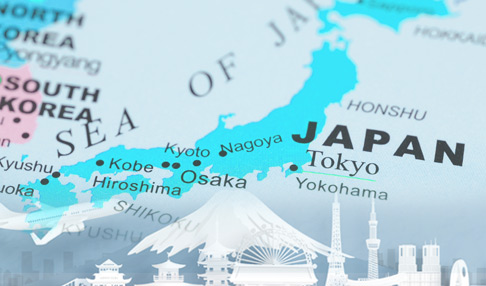Kaitenzushi in Japan: What to Know about Conveyor Belt Sushi
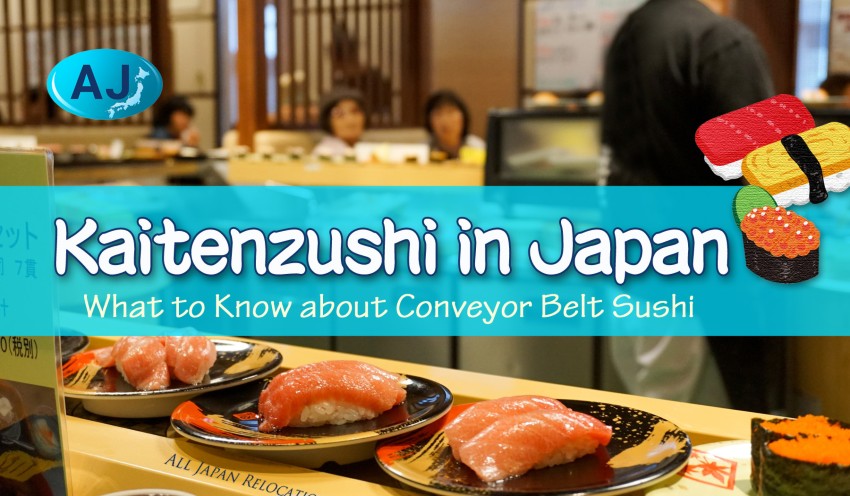
There are a number of ways to enjoy sushi in Japan, but one of the most accessible, fun, and easy-to-use options is kaitenzushi, better known in the West as conveyor belt sushi. Here we will cover everything you need to enjoy this quintessential Japanese experience.
What is Kaitenzushi?
Kaitenzushi is one of the most common and convenient types of sushi restaurants in Japan. Sushi is transported around the restaurant’s dining area via a long loop of conveyor belt starting and ending in the kitchen.
There are usually two tracks — a slow track for plates of sushi that are available for any patron to take, and a fast-moving track that takes food that has been ordered by a specific customer directly to his or her assigned seat. The slow track has a variety of sushi types, side dishes, and even desserts.
There are usually a few types of seating options in a kaitenzushi restaurant. The most common seating is either at the counter or in a booth directly next to the tracks for easy access to the sushi as it goes past. However, there are usually also some tables or booths on the outer edges of the restaurant for customers who only wish to order directly from the menu and are not interested in using the conveyor belt.
One of the best aspects of kaitenzushi is the reasonable pricing. Conveyor belt sushi is priced per plate depending on the fish used and cooking required. This allows visitors to eat as much or as little as they want, both in quantity and value. The plates usually range from as low as 100 yen to around 800 yen for the very best cuts of fish. The average is typically around 300–500 yen and there are usually a few pieces of sushi per plate.
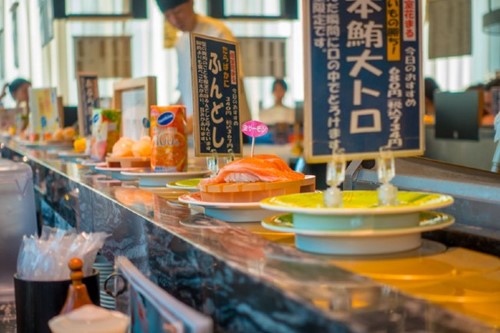
How to Enjoy Conveyer Belt Sushi in Japan
Kaitenzushi is typically accessible for international tourists because the system is easy to understand and fairly uniform across various chains and independent restaurants. With the introduction of touchscreens and electronic ordering, there is also often an English language menu option, making the process even easier.
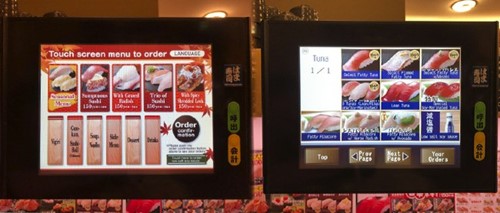
When eating at a kaitenzushi restaurant, there are two main options — ordering sushi directly or taking plates from the conveyor belt. If a plate of pre-made sushi on the conveyor belt looks appetizing, you are free to take it. The plates are usually numbered or colored differently to indicate price. However, many people prefer to order from the touchscreen rather than wait for the possibility of their preferred sushi to come around. From there, you can browse the menu and choose various sushi plates to be delivered directly to you.
After completing an order, the sushi is delivered within a few minutes to your table. You are able to make as many orders as you like, so it isn’t necessary to order everything in one go. This allows the meal to be both relaxing and convenient.
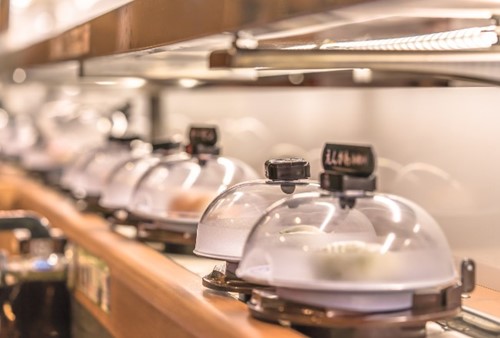
Popular Dishes to Try
Kaitenzushi is a great option for both more adventurous travelers looking to try a large variety of sushi or for those who wish to stick to the basics. As it is intended to appeal to a variety of people, kaitenzushi restaurants regularly have a wide selection of sushi to choose from. These start with the most common types of sushi in Japan, nigiri sushi and maki sushi.
Nigiri sushi consists of a small mound of sushi rice with fish laid on top while maki sushi is more similar to the sushi rolls that have become popular in many Western countries. Kaitenzushi restaurants also often offer “battleship sushi” called gunkan maki, an oval-shaped nigiri wrapped with seaweed and topped with a selection of fish.
Salmon and tuna are the most common types of fish available, and most restaurants will have a few varieties of each, with prices differing based on the fattiness of the fish or method of preparation. Other common options include eel, fish eggs, and mackerel. For those who don’t like fish, there are a range of other options including fried tofu, egg nigiri sushi and cucumber rolls. Many kaitenzushi restaurants now also offer small desserts. These usually involve cream puffs, pudding, or cheesecake.

Proper Etiquette in a Kaitenzushi Restaurant
As with Japanese society in general, there are some etiquette guidelines to follow when it comes to kaitenzushi. One of the most important rules is that once you touch a plate on the conveyor belt, you must take it. There can be no indecision or changing your mind once you have reached for the plate. Even if you decide not to eat it, you still have to keep the plate. This is considered a general rule of politeness as no customer wants to take a plate of sushi that someone else has been touching.
It is also important that when you order sushi from the touchscreen menu that you take it from the conveyor belt and don’t leave it to return to the kitchen, even if you have changed your mind. The reverse is also true, in that you should never take someone else’s ordered sushi. Kaitenzushi restaurants will always have a system to indicate whether the sushi is available for anyone or is reserved for a specific patron, whether it is the two-track system mentioned earlier, or marked plates being used for orders, so there should be no confusion.
The final rule is to keep your empty plates on the table. As mentioned earlier, the different colors or patterns of the plates indicate price and at the end of the meal the server will quickly tally up the plates to give you your bill. Therefore, it is important to keep the empty plates in order for the system to work efficiently.
Read More: Restaurant Etiquette in Japan
Famous Kaitenzushi Restaurant Chains in Japan
If all this talk of sushi has whetted your appetite, here are some of the top kaitenzushi chain restaurants to try during your next outing in Japan.
Hamazushi
While Hamazushi is a more recent addition to the kaitenzushi market, it has already opened 500 restaurants across Japan and is becoming increasingly popular. Hamazushi is a great first choice for visitors to Japan as menus are available in English, there is an English version of the website, and the restaurant even released an English video explaining how their system works.
Sushiro
One of the most popular kaitenzushi restaurants in Japan is Sushiro. With constant innovation and introduction of new menu items, Sushiro has stayed contemporary despite being one of the first conveyor belt sushi restaurants around.
Genki Sushi (Genkizushi)
Genki Sushi may be a familiar name as this is one of the few kaitenzushi chains to go international. With restaurants across Hong Kong, Singapore, Australia, and the United States, as well as throughout Japan, Genki Sushi is very popular among Japanese locals and visitors alike.
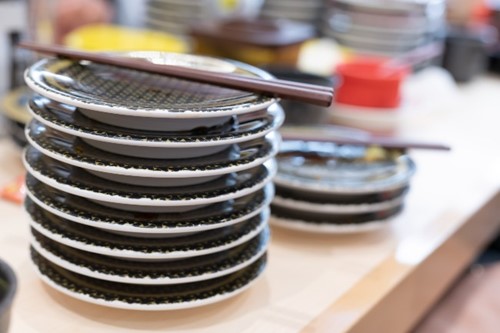
Explore the Culinary World of Japan
Kaitenzushi is a great, convenient alternative to high-end sushi restaurants that are famous for requiring careful appreciation of each bite. For visitors to Japan, kaitenzushi is a wonderful way to have a cheap, easy, yet culturally authentic experience of Japanese sushi, whether trying it solo, with a family, or with friends.
For more on Japanese food, etiquette, and culture, be sure to read through Food, Recipes, Catering in Japan.









